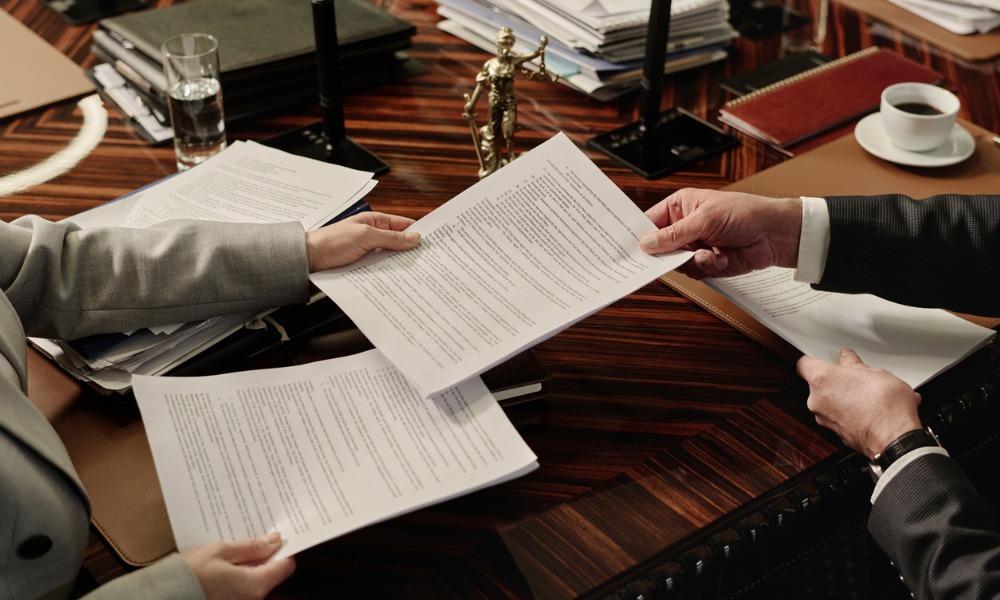Knowing when and how to conduct a workplace investigation is an important part of providing legal guidance to your organization. Taking the time to learn the key steps of a proper investigation before the need arises will help manage risk and minimize liability.
A successful workplace investigation requires planning, preparation, organization, skill, speed, and discretion. How the investigation is handled can affect whether a lawsuit is filed or complaint is made to a regulatory body. An employer that neglects to conduct an investigation, or conducts an inadequate investigation, faces increased risk of legal liability.
Preliminary considerations
There are a number of preliminary considerations before an investigation can begin. Their determination will depend on the nature of the complaint. All should be considered as soon as possible to ensure the investigation proceeds as quickly and efficiently as possible. They include:
• Steps necessary to maintain privilege over the investigation and any resulting report. This is particularly important where in-house counsel is leading the charge. Solicitor-client privilege in Canada has applied equally to communications with in-house counsel as it has to communications with external counsel. However, sometimes the lines between legal advice and business advice are blurred in communications between in-house counsel and their client organizations. Additional care is therefore required to set and maintain an appropriate solicitor-and-client framework.
• Whether to report the matter to the police, which will likely require disclosure of all relevant information.
• Whether there is a legal requirement to conduct an investigation and/or report the outcome of the investigation to a government regulatory body (i.e. in the case of a serious workplace injury).
• Whether it is appropriate for the complainant and/or subject of the complaint to remain in the workplace during the investigation.
• Whether assistance will be required from any third-party experts to complete the investigation. For example, a forensic accountant may be required to assist in an investigation involving allegations of financial improprieties.
The investigation team
Who will do the investigation is a key piece of the puzzle to be considered carefully and strategically. Should the investigation be conducted by an internal or external investigation team? Internal investigators typically have the advantage of speed and lower cost. However, they may not have the skills, experience, or time to carry out a thorough investigation. An internal investigation team may also not be appropriate if the subject of the investigation is a senior employee.
The investigation team should consist of at least two individuals: one to ask questions and one to take detailed notes. Each may be called upon to give evidence regarding the conduct of the investigation. Where the investigation may result in disciplinary action against an employee, the investigators should have sufficient authority to make findings of fact and recommendations that might negatively influence the career of the subject employee.
Relevant documents
Relevant documents, including electronic files, should be secured and reviewed by the investigation team as soon as possible. This includes practices, policies, procedures, or codes of conduct relevant to the subject matter of the investigation or that address the investigation process. All of these documents will help shape the scope of the investigation and identify individuals who will need to be interviewed.
All documents and electronic records created in connection with the investigation should be kept confidential and preserved in a secure location.
Conducting interviews
Every individual with knowledge of the matters giving rise to the investigation should be interviewed.
The objective of the interview is to elicit and record as much detail about the complaint or incident as possible, including: date, time, location, witnesses, what happened prior, during, and after the incident, whether the same or similar incident was previously reported, and any prior action taken, etc.
Every individual interviewed during the investigation should be treated with fairness and impartiality. If not, the investigation may be tainted and any subsequent disciplinary action invalidated.
Whenever possible, open-ended questions should be used to allow the interviewee to tell the story in his or her own words.
Generally speaking, an employee interview should take place in the workplace during business hours. However, depending on the subject matter of the investigation, an interview may need to be conducted at an off-site location.
When the investigation arises out of a complaint, the complainant will typically be interviewed first. This enables the investigators to elicit additional information about the complaint and how the complainant would like to see the issues resolved. Thereafter the person subject to the complaint and any other witnesses should be interviewed, one at a time.
When interviewing an employee alleged to have engaged in misconduct, the interviewer should identify the specific allegation of misconduct and give the employee an opportunity to provide an explanation. The employee should also be encouraged to submit a written statement setting out his or her version of events.
Each interviewee should be given a brief description of the purpose of the interview, advised the investigation process is private, and encouraged not to discuss the matter following the interview (with the exception of counsel, if desired). If possible, all interviews should be conducted on the same day to reduce the opportunity for witnesses to inappropriately co-ordinate stories.
If additional information comes to light during the investigation, it may be necessary to conduct follow-up interviews.
Documenting the interviews
Careful, accurate, and succinct notes should be taken at each interview. These notes may have to be produced in subsequent litigation. Notes should record:
• the date of the interview;
• who was interviewed;
• who was present during the interview;
• the author of the notes;
• where the interview took place;
• the questions asked;
• verbal and non-verbal responses given in as much detail as possible; and
• whether the information provided arose from direct knowledge or hearsay.
Notes should not contain any conclusions, opinions, or editorial comments from the note-taker.
While there is no legal requirement for it, get the interviewee to sign the notes to confirm their completeness or accuracy shortly after the interview.
Assess, evaluate, and report
Having gathered the relevant evidence, the investigation team will assess, evaluate, and report. The report should:
• summarize the complaint;
• identify any remedial steps taken pending completion of the investigation;
• summarize the relevant evidence obtained from the documents reviewed and individuals interviewed;
• identify and evaluate any inconsistencies in the evidence;
• assess credibility and weigh competing evidence to attempt to reach a factual conclusion;
• explain the reasons for any conclusions reached, and
• communicate the outcome.
In most cases, the report of the investigation should be kept confidential and only provided to legal counsel and the individual charged with making the final decision regarding remedial action or discipline. However, general information regarding the outcome of the investigation should be communicated to the individuals affected by the matter. In some cases this may be restricted to a complainant and individual alleged to have committed misconduct. In other cases, the list of individuals affected is much longer and may involve the entire organization.
In the case of an accident investigation, the results of the investigation may also be required to be provided to the organization’s health and safety committee and/or government regulatory bodies.
In every case, care must be taken when drafting the communication(s) to ensure an appropriate balance is struck between necessary transparency and responsiveness, and exposing the organization to unforeseen, additional legal liability.
Take action
Take steps as soon as possible to implement decisions reached and carry out remedial or disciplinary action. Finally, be sure to keep a written record of all remedial and disciplinary steps taken.
Lisa Bolton is a lawyer with Sherrard Kuzz LLP, a management-side employment and labour law firm in Toronto.
A successful workplace investigation requires planning, preparation, organization, skill, speed, and discretion. How the investigation is handled can affect whether a lawsuit is filed or complaint is made to a regulatory body. An employer that neglects to conduct an investigation, or conducts an inadequate investigation, faces increased risk of legal liability.
Preliminary considerations
There are a number of preliminary considerations before an investigation can begin. Their determination will depend on the nature of the complaint. All should be considered as soon as possible to ensure the investigation proceeds as quickly and efficiently as possible. They include:
• Steps necessary to maintain privilege over the investigation and any resulting report. This is particularly important where in-house counsel is leading the charge. Solicitor-client privilege in Canada has applied equally to communications with in-house counsel as it has to communications with external counsel. However, sometimes the lines between legal advice and business advice are blurred in communications between in-house counsel and their client organizations. Additional care is therefore required to set and maintain an appropriate solicitor-and-client framework.
• Whether to report the matter to the police, which will likely require disclosure of all relevant information.
• Whether there is a legal requirement to conduct an investigation and/or report the outcome of the investigation to a government regulatory body (i.e. in the case of a serious workplace injury).
• Whether it is appropriate for the complainant and/or subject of the complaint to remain in the workplace during the investigation.
• Whether assistance will be required from any third-party experts to complete the investigation. For example, a forensic accountant may be required to assist in an investigation involving allegations of financial improprieties.
The investigation team
Who will do the investigation is a key piece of the puzzle to be considered carefully and strategically. Should the investigation be conducted by an internal or external investigation team? Internal investigators typically have the advantage of speed and lower cost. However, they may not have the skills, experience, or time to carry out a thorough investigation. An internal investigation team may also not be appropriate if the subject of the investigation is a senior employee.
The investigation team should consist of at least two individuals: one to ask questions and one to take detailed notes. Each may be called upon to give evidence regarding the conduct of the investigation. Where the investigation may result in disciplinary action against an employee, the investigators should have sufficient authority to make findings of fact and recommendations that might negatively influence the career of the subject employee.
Relevant documents
Relevant documents, including electronic files, should be secured and reviewed by the investigation team as soon as possible. This includes practices, policies, procedures, or codes of conduct relevant to the subject matter of the investigation or that address the investigation process. All of these documents will help shape the scope of the investigation and identify individuals who will need to be interviewed.
All documents and electronic records created in connection with the investigation should be kept confidential and preserved in a secure location.
Conducting interviews
Every individual with knowledge of the matters giving rise to the investigation should be interviewed.
The objective of the interview is to elicit and record as much detail about the complaint or incident as possible, including: date, time, location, witnesses, what happened prior, during, and after the incident, whether the same or similar incident was previously reported, and any prior action taken, etc.
Every individual interviewed during the investigation should be treated with fairness and impartiality. If not, the investigation may be tainted and any subsequent disciplinary action invalidated.
Whenever possible, open-ended questions should be used to allow the interviewee to tell the story in his or her own words.
Generally speaking, an employee interview should take place in the workplace during business hours. However, depending on the subject matter of the investigation, an interview may need to be conducted at an off-site location.
When the investigation arises out of a complaint, the complainant will typically be interviewed first. This enables the investigators to elicit additional information about the complaint and how the complainant would like to see the issues resolved. Thereafter the person subject to the complaint and any other witnesses should be interviewed, one at a time.
When interviewing an employee alleged to have engaged in misconduct, the interviewer should identify the specific allegation of misconduct and give the employee an opportunity to provide an explanation. The employee should also be encouraged to submit a written statement setting out his or her version of events.
Each interviewee should be given a brief description of the purpose of the interview, advised the investigation process is private, and encouraged not to discuss the matter following the interview (with the exception of counsel, if desired). If possible, all interviews should be conducted on the same day to reduce the opportunity for witnesses to inappropriately co-ordinate stories.
If additional information comes to light during the investigation, it may be necessary to conduct follow-up interviews.
Documenting the interviews
Careful, accurate, and succinct notes should be taken at each interview. These notes may have to be produced in subsequent litigation. Notes should record:
• the date of the interview;
• who was interviewed;
• who was present during the interview;
• the author of the notes;
• where the interview took place;
• the questions asked;
• verbal and non-verbal responses given in as much detail as possible; and
• whether the information provided arose from direct knowledge or hearsay.
Notes should not contain any conclusions, opinions, or editorial comments from the note-taker.
While there is no legal requirement for it, get the interviewee to sign the notes to confirm their completeness or accuracy shortly after the interview.
Assess, evaluate, and report
Having gathered the relevant evidence, the investigation team will assess, evaluate, and report. The report should:
• summarize the complaint;
• identify any remedial steps taken pending completion of the investigation;
• summarize the relevant evidence obtained from the documents reviewed and individuals interviewed;
• identify and evaluate any inconsistencies in the evidence;
• assess credibility and weigh competing evidence to attempt to reach a factual conclusion;
• explain the reasons for any conclusions reached, and
• communicate the outcome.
In most cases, the report of the investigation should be kept confidential and only provided to legal counsel and the individual charged with making the final decision regarding remedial action or discipline. However, general information regarding the outcome of the investigation should be communicated to the individuals affected by the matter. In some cases this may be restricted to a complainant and individual alleged to have committed misconduct. In other cases, the list of individuals affected is much longer and may involve the entire organization.
In the case of an accident investigation, the results of the investigation may also be required to be provided to the organization’s health and safety committee and/or government regulatory bodies.
In every case, care must be taken when drafting the communication(s) to ensure an appropriate balance is struck between necessary transparency and responsiveness, and exposing the organization to unforeseen, additional legal liability.
Take action
Take steps as soon as possible to implement decisions reached and carry out remedial or disciplinary action. Finally, be sure to keep a written record of all remedial and disciplinary steps taken.
Lisa Bolton is a lawyer with Sherrard Kuzz LLP, a management-side employment and labour law firm in Toronto.







